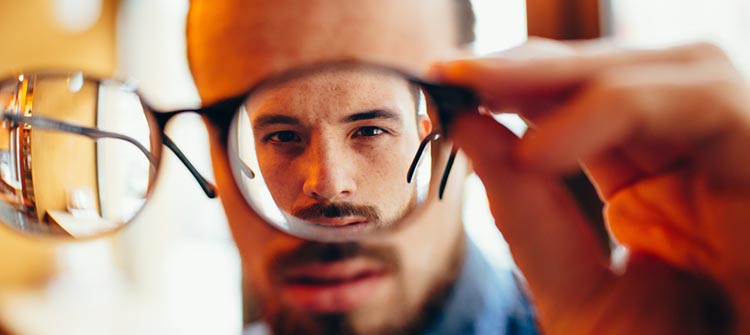When’s the last time you made an appointment to see your Kansas City ophthalmologist? If it’s been a while, you should come in to get examined for myopia and other common eye problems. According to the National Eye Institute, myopia is incredibly common, occurring in approximately 42 percent of people in the United States between the ages of 12 and 54.
What is Myopia?
Typically known as nearsightedness (or short-sightedness), myopia is an eye condition in which you can see objects just fine when they are close by, but your vision becomes blurred when looking at distant objects. This phenomenon basically happens when the eyeball grows too long or the cornea — the eye’s protective outermost layer — becomes too curved. When this occurs, light entering the eye doesn’t get focused on the retina, the light-sensitive area at the back of the eye, but in front of it.
Myopia, to some degree, seems to run in families. It is generally diagnosed in childhood or adolescence.

Signs and Symptoms of Myopia
How can you tell if you have myopia? You’ll need to visit with your Kansas City eye doctors for a thorough examination to determine if you are nearsighted, but there are some indicators of the condition to look out for. For example, many people with myopia often struggle to read a whiteboard at school or can’t clearly make out the images in a movie. Meanwhile, this person may have little or no trouble reading a book or staring at a computer up close.
Signs and symptoms of nearsightedness include:
- Having blurry distance vision
- Experiencing headaches from eye strain
- Squinting to see clearly
- Having trouble seeing while driving, particularly in the dark (known as night myopia)
If you don’t notice any obvious signs of vision problems, myopia may also be detected from behavioral patterns, like needing to sit closer to a television, frequent squinting, or consistently rubbing one’s eyes.
Treatment for Myopia
Nearsightedness can be diagnosed with a comprehensive eye exam at your local eye care clinic. Your eye doctor will perform a series of tests, such as directing light into your eyes or having you look through different lenses.
If you are diagnosed with nearsightedness, your doctor will likely suggest corrective lenses to treat the condition. This is the most commonly prescribed treatment for myopia.
Eyeglasses and/or contact lenses can correct vision errors and help you see far away objects more clearly. A variety of eyeglasses and contact lenses are available to choose from.
You may also consider refractive surgery to treat nearsightedness by changing the shape of the cornea. Two common surgical treatment options for myopia include LASIK and PRK.
- Laser-assisted in situ keratomileusis, or LASIK, involves making a tiny flap in the corner to remove thin layers of tissue from the center to help flatten it.
- Photorefractive keratectomy, or PRK, is a procedure in which the surgeon removes surface cells, or the epithelium, of the cornea with a laser. This tissue grows back over time reshaped so that light can enter the eye properly.
Your doctor will work with you to determine which myopia treatment option best suits your case.
If you’re having trouble seeing objects in the distance or unable to complete tasks due to vision problems, see your Kansas City eye doctor as soon as possible. It’s extremely important to have your eyes evaluated every one or two years, so that common eye conditions like myopia can be properly treated before your vision worsens.
Contact us today to learn more about nearsightedness and schedule your eye exam.
Posted January 4, 2018 by Silverstein Eye Centers